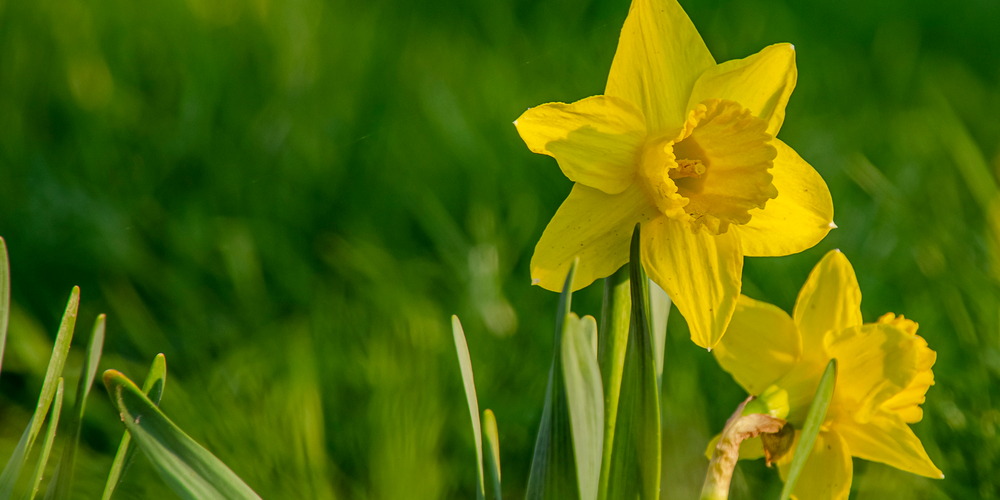Flowering plants can increase the looks of most gardens. However, their bright colors are mostly not to your delight but an evolutionary response to the plant’s reproductive needs.
Indeed, showy blooms’ objective is to attract pollinators to help them reproduce. For vegetables and fruits, getting pollinated is essential to fruit production (and harvests).
But despite what you may think, even insects have their preferences. For instance, some plants better attract butterflies, while others are the favorite food for bees. So, what about daffodils? Do bees like daffodils?
And what should you know about the pollination process? You have landed in the right place to find out! Keep reading to learn more about these and clear your doubts about the relationship between daffodils and bees.
Do Bees Like Daffodils?
Daffodils produce large and showy flowers, so you would expect them to be attractive to bees. However, you must consider the role of plant breeders in developing new species. Indeed, while bees seemed to pollinate daffodils in native Europe, today, most flowers need hand-pollination to reproduce successfully.
The reason for that is straightforward. As breeders select for “beauty,” they cross-species with favorable characteristics aiming to produce new varieties of flowers with symmetrical blooms, attractive angles, variegated colors, and appealing scents (for instance).
While that might make the plant more aesthetically pleasing to humans, it is a process that often results in the loss of attractiveness among pollinators. Indeed, by selecting some characteristics over others, the ability to produce delicious nectar or nutrition pollen might vanish.
So, it seems like daffodils aren’t the best plants to add to your garden if you are looking to attract bees. Indeed, while they might hang around, lavender, Muscari, red-flowering currant, and other species are much more effective.
Are Daffodils Good For Bees?
Overall, bees tend to avoid daffodils unless there aren’t any options around. The previous section contains part of the reason. Additionally, the pollen daffodils offer isn’t as nutritious as that other plants produce.
Still, because daffodils tend to bloom in late winter to early spring, they might be an ideal food source for the bees coming out of hibernation. Indeed, around that time, not many plants are available to bees.
So, overall, daffodils can be good for these precious pollinators. Only, they might prefer other food sources if they have the option to choose.
Usually, the best plants for bees are native, as the bees living in your local area tend to be familiar with them. And if you want to plant daffodils in your garden, select natural species as they will display higher-quality pollen, which tends to be more attractive among pollinators.
What Pollinates Daffodils
Under ideal conditions, you shouldn’t participate in the pollination process in daffodils. Wind and insects are crucial actors in their natural pollination process. Daffodil plants contain both male and female reproductive organs, meaning they are self-fertile.
Still, hybrid species might need some help. Use a brush or a pair of tweezers to transfer pollen from one flower to the next. However, if you let nature does its course, you’ll probably get better results.
How to Grow Daffodils
Daffodils are delicate-looking but are hardy plants native to the northern regions of Europe. They grow in most soil and climate conditions, even though they might struggle in highly humid environments.
If you don’t know this already, daffodils grow from bulbs. Selecting a healthy one is crucial to the survival of your plant.
Plant them after purchasing, which should happen in the fall, to allow the bulbs enough time to establish themselves in the soil and flower in the early spring (or late winter if you are lucky).
Traditional daffodils produce yellow or white flowers. However, as we explained before, you can now find varieties of different colors. Locate these plants under the full sun to get the most attractive blooms.
Also, consider amending the soil with an organic fertilizer such as manure or compost. Don’t forget that these plants are susceptible to root rot and won’t tolerate soggy substrates: you might have to add a layer of mulch (or some sand) to increase drainage and ease compaction.
Under ideal growing conditions, daffodils will produce daughter bulbs that you can divide and propagate.
Related article: How to Store Daffodil Bulbs for Next Year


